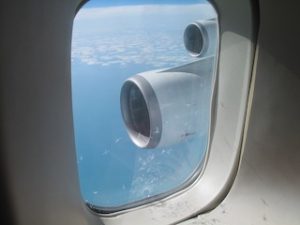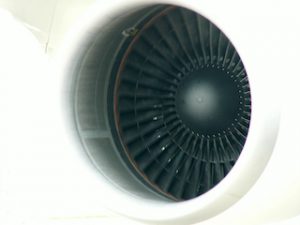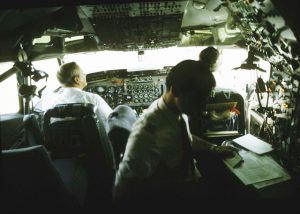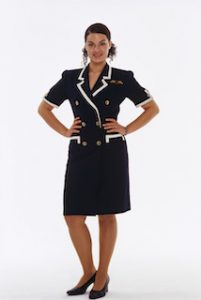Thrombus Risk Rises With Long Flights
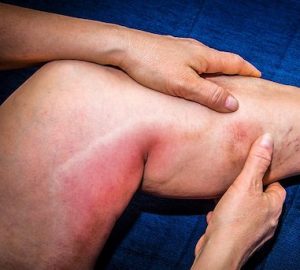 Thrombus refers to a blood clot that forms within a vein or artery. Long flights increase thrombus risk due to reduced movement. Walking down the airplane aisle helps prevent blood clots. This simple action boosts circulation. When legs remain still, blood flow slows. That creates a perfect setting for clot formation.
Thrombus refers to a blood clot that forms within a vein or artery. Long flights increase thrombus risk due to reduced movement. Walking down the airplane aisle helps prevent blood clots. This simple action boosts circulation. When legs remain still, blood flow slows. That creates a perfect setting for clot formation.
Movement improves blood flow in flights
Staying seated for hours lowers circulation. Lack of leg movement lets blood pool in lower limbs. This creates a greater chance for thrombus. Standing and walking improves blood movement. Moving muscles squeeze the veins. That helps push blood toward the heart. Small actions keep your veins working properly.
Short walks help prevent clot formation
A short walk every hour helps the body stay active. It reduces stiffness and improves blood flow. These walks ease pressure on legs. Each step helps push blood through veins. Walks do not need to be long. Frequent movement makes a real difference during extended travel.
Stretching supports vein health in-flight
Even seated, you can do stretches. Lift your toes while keeping heels down. Rotate your ankles. Flex your knees. These stretches activate leg muscles. Active muscles push blood upward. Blood flows better when the legs stay engaged. Do these every 20 minutes for safer circulation.
Simple leg lifts can reduce risk
Leg lifts help blood avoid pooling. Lift one leg slightly. Hold and lower. Then switch legs. Repeat the process slowly. These movements keep muscles working. They also prevent long-term pressure on leg veins. Always keep knees bent while lifting. This improves the effect without straining joints.
Foot circles boost circulation mid-flight
Foot circles are easy and helpful. Extend one leg a little. Rotate your foot slowly in both directions. Repeat with the other leg. These movements wake up lower leg muscles. That keeps veins active. Blood flows better and clot risk lowers. Perform these every 30 minutes for better effect.
Compression socks support blood movement
Compression socks apply gentle pressure to the legs. This improves circulation during long travel. They help prevent thrombus by reducing swelling. Wear these from takeoff to landing. They come in many sizes and styles. Choose light pressure socks if flying for several hours. Movement and socks work well together.
Hydration affects circulation and clot risk
Water keeps blood thin and flowing smoothly. Dry cabin air causes dehydration. That thickens blood. Thick blood clots more easily. Drink water regularly throughout the flight. Avoid alcohol and caffeine. These can cause dehydration. Keep a water bottle nearby. Sip slowly and frequently to stay hydrated.
Tight clothes can limit blood flow
Tight clothing around the waist or legs slows circulation. Wear loose and soft clothes during flights. Avoid belts or pants that press into the skin. Choose elastic waistbands for comfort. Comfortable clothing helps you move more freely. Better movement reduces clot risks by supporting healthy circulation.
Use seat time wisely for health
Even while seated, small movements help. Tap your feet. Squeeze your calf muscles. Shift your weight from side to side. These actions improve blood flow. Keep doing them through the flight. They work quietly and require little effort. Make movement a habit while in your seat.
Take a walk when cabin clears
Once the seatbelt sign turns off, walk the aisle slowly. Use the full length of the cabin if possible. Walk with care. Hold onto seat backs if needed. Even short walks help push blood through your body. Walks fight stiffness and lower thrombus risk.
Avoid sleeping for too long
Long, deep sleep in a cramped seat reduces blood flow. Try to change positions while resting. If possible, wake up every hour to stretch or move. Even light movement while half-awake helps. Movement during sleep breaks improves blood flow and lowers thrombus risk.
Set reminders to move every hour
Use a watch or phone timer to stay on track. Set hourly alerts. Let them remind you to stretch, walk, or move. Frequent movement reduces blood pooling. Reminders make it easier to keep circulation steady throughout long flights. Stay alert to body signals as well.
Choose aisle seats to move freely
Aisle seats give easier access to walkways. That makes movement less disruptive. You can get up without asking others to move. This supports more frequent walking. Greater freedom means better circulation. Choose an aisle seat if blood flow concerns you.
Pre-flight movement prepares the body
Walk around the terminal before boarding. Stretch your legs. Take stairs instead of escalators. These steps wake up the muscles. Active muscles help maintain healthy blood flow into the flight. Starting active helps carry better circulation into long seat time.
Post-flight movement supports recovery
Once off the plane, walk immediately. Keep muscles active after sitting for hours. Take longer routes through the terminal. Stretch once you reach your destination. This supports continued blood movement. Post-flight action matters as much as in-flight habits. Keep circulation strong after landing.
Watch for signs of swelling or discomfort
Swelling in the lower leg may signal slow circulation. Watch for discomfort, heat, or redness. These signs may require medical attention. Movement helps prevent such signs. Stay aware of body signals. Seek help if symptoms grow worse after a flight.
Daily activity reduces long-term risk
Regular daily movement keeps circulation healthy. Walk during breaks at work. Use stairs instead of elevators. Stay active outside of travel. Strong circulation habits reduce thrombus risk on flights. Better daily activity means better blood flow while traveling.
Light exercises between connections help
If flights include layovers, use the extra time to move. Walk the terminal. Stretch in quiet corners. Avoid sitting during the wait. Each minute of movement reduces clot risk. These breaks are perfect for adding leg activity. Stay moving between flights.
Elevate legs when possible post-travel
After long flights, raise your legs when seated. Use a pillow or footrest to elevate feet. This helps blood return to the heart. Elevation supports better blood flow after pressure from long sitting. Add this to your post-flight care.
Walk slowly but frequently in cabin
Cabin space may feel small. Still, walk slowly and carefully. Each step boosts circulation. Even walking five rows and back helps. Repeat several times throughout the flight. Walking remains one of the best ways to lower thrombus risk during travel.
Choose movement during layover lounges
Lounges offer a chance to relax. However, staying seated reduces blood movement. Use lounge space to walk and stretch. Balance comfort with activity. Light exercises between flights improve flow and prevent thrombus. Let the body stay active, even in comfort zones.
Use in-flight entertainment breaks to move
Take breaks between movies or shows to stand and stretch. Entertainment passes time, but it should not stop movement. Each break helps keep blood flowing. Make small movement goals between shows. Keep your body active while enjoying flight entertainment.
Inform crew if you need extra movement
If you have health conditions, tell flight staff. They can suggest movement times or give space when possible. Crews support safe travel. Working with them may help with extra legroom or walk options. Keep communication clear and respectful for smooth help.
Calf pumps offer big benefits mid-flight
Pump your calves by pushing your toes up and down. These small movements help push blood upward. They improve blood flow during seated times. Calf pumps reduce the chance of thrombus. Do them quietly and regularly without drawing attention.
Avoid crossing legs while seated
Crossed legs block blood flow in the lower body. Sit with feet flat and spaced. Let blood flow without pressure from crossing. Reposition your legs often. Sit up straight to keep circulation strong. Small posture changes make a large impact during long flights.
Follow doctor advice if at risk
Some people need extra care during long flights. Follow medical advice if you have a history of clots. Blood-thinning medicines or travel plans may be needed. Inform airlines about special health needs early. Planning supports safe and smooth travel for those at risk.
Make light movement a travel habit
Frequent and gentle movement supports better health. Walk, stretch, and move every hour during flights. Use reminders and good seating. Wear loose clothes and stay hydrated. These steps reduce thrombus risk. Keep movement a normal part of your travel experience.
Healthy flow
Strong blood flow supports safe and happy travel. Movement, hydration, and care reduce thrombus risk during flights. Every small effort helps circulation. Walk the aisle, stretch your legs, and stay active. Your body responds well to movement. Let healthy flow lead to smoother and safer journeys.
